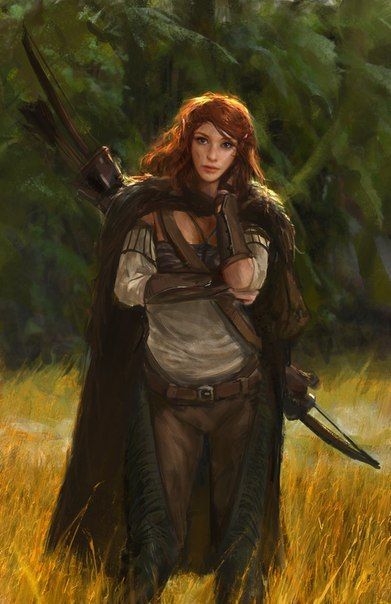Half-Elf
Walking a fine line between two species, half-elves both fit and don't fit into the worlds that they're born into. To humans they appear to be elves and to elves they appear to be humans. Like their elven parents, half-elves share a love for nature and the refined sense; and like their human parents, they share that same human trait that spurs curiosity and ambition. Some could say that half-elves come from the best of both worlds. Even though this may be so, they never feel like they truly fit in with whatever society they choose to live with -- whether that be human or elf. This combined with their wanderlust has driven many half-elves to live lives in wandering solidarity even though they're welcome in any land that is dominated by elves and humans. Many a half-elf can be found amongst the nomadic Kattegat Tribe.
Basic Information
Biological Traits
Half-Elves live up to around 200 years old and around the same height as both humans and elves. One of the main identifying features of a half-elf is their ears. Like elves, half-elf ears are pointed, but they aren't as long or sharp. If one can tell the difference in ear length, a half-elf shouldn't be that hard to spot. Half-Elves are able to grow facial hair as well and many do this to hid their elven heritage to try and fit in.
Genetics and Reproduction
Half-Elves, like all humanoids, reproduce sexually. Like humans, half-elf females have a period of heightened fertility that comes around about once a month. Sometimes every couple months. Half-Elf babies tend to spend nine months in their mother's wombs before being born just like humans.
Growth Rate & Stages
Half-elves mature much faster than both elves and humans. As to where humans and elves fully mature around the same age, half-elves mature at the age of 20. This of course means that they start their pubescent stage much earlier as well. This makes growing up for half-elves hard sometimes as they grow and mature while their friends are still stuck in childhood.
Ecology and Habitats
Like humans, half-elves can survive and endure just about anywhere.
Dietary Needs and Habits
Like most humanoid species, half-elves are omnivores and sustain themselves on a diet of both plants and animals.
Additional Information
Social Structure
Half-Elves really have no social structure as they are welcomed and live among both humans and elves. Thus, fitting into whatever societal caste their homes provide. There are some elves that look down upon half-elves though, but these tend to be the racial zealots and they are few in number.
Perception and Sensory Capabilities
Being half-elven, half-elves naturally inherit the heightened perceptive and sensory capabilities of their elven parents. Like the elves they're able to see in the dark and where an elf can see up to 15 miles away, a half-elf can only see up to half that distance.
Civilization and Culture
Culture and Cultural Heritage
Half-Elves form a unique culture in the sense that they straddle both the customs and traditions of whatever elves and humans they're descended from. They blend these beliefs together to create something unique to themselves. When it comes to other races such as the Aasimar, Tieflings, and Half-Orcs, half elves tend to be on better relations with them since they understand what it is like to not fully belong anywhere.
Interspecies Relations and Assumptions
- Humans: Friendly
- Elves: Friendly
- Dwarves: Indifferent
- Firbolgs: Friendly
- Gnomes: Indifferent
- Goliaths: Indifferent
- Aasimar: Friendly
- Tieflings: Indifferent
- Half-Orcs: Friendly
- Orcs: Unfriendly
- Goblinoids: Hostile
- Giants: Hostile
Genetic Descendants
Lifespan
200 years
Average Height
5'0"-6'0"
Average Weight
160 lbs.
Average Physique
Neither as slender as the elves or as broad as humans.
Body Tint, Colouring and Marking
The coloration of half-elves tends to be a mix between their human and elf parents. This provides even more variety among them than that of either of their parents.




Comments